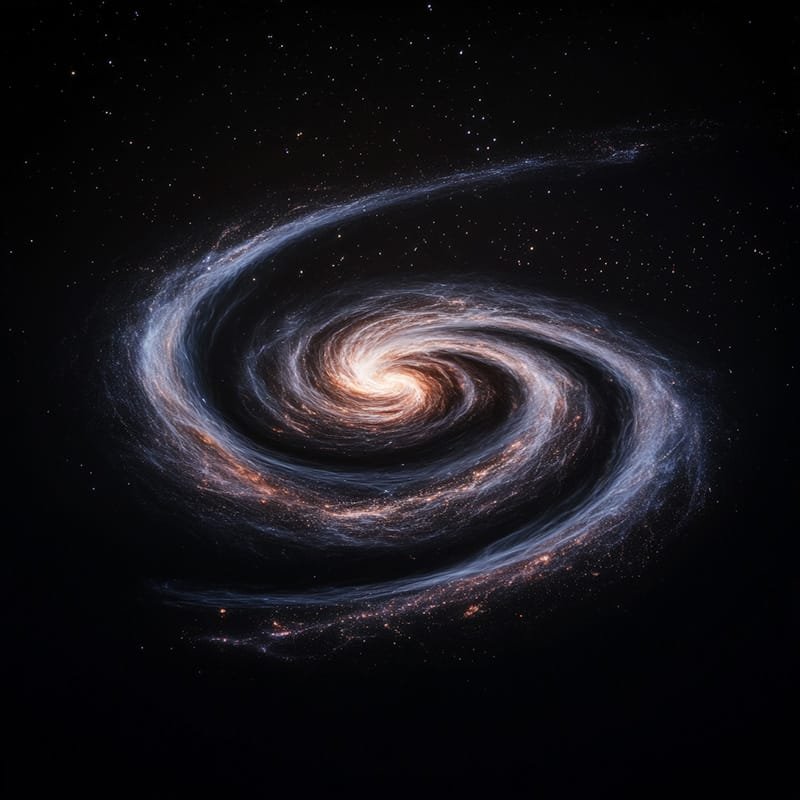Stars are one of the most fascinating and awe-inspiring objects in the universe. They are born from the gravitational collapse of interstellar gas and dust, and go through a life cycle that spans billions of years. Studying star formation and life cycle is crucial in understanding the origins and evolution of the universe.
The process of star formation begins with the gravitational collapse of a dense region within a molecular cloud. As the cloud collapses under its own gravity, it fragments into smaller clumps, each of which will eventually become a star. These clumps, known as protostars, are surrounded by a rotating disk of gas and dust. Over time, the protostar accretes more material from the disk, growing in size and mass.
Understanding star formation is important because it provides insights into how galaxies form and evolve. Stars are the building blocks of galaxies, and their formation plays a key role in shaping the structure and dynamics of galaxies. By studying star formation, astronomers can gain a better understanding of how galaxies form, how they evolve over time, and how they interact with each other.
Key Takeaways
- Stars are formed through the gravitational collapse of interstellar gas and dust.
- Interstellar gas and dust play a crucial role in the formation of protostars.
- Temperature and pressure are important factors in determining the type of star that will form.
- Different types of stars have unique characteristics, such as size, temperature, and luminosity.
- The end of a star’s life can result in a supernova or planetary nebula, which can have a significant impact on the universe.
The birth of a star: gravitational collapse and protostars
Stars are formed through a process known as gravitational collapse. This occurs when a dense region within a molecular cloud becomes unstable and collapses under its own gravity. As the cloud collapses, it fragments into smaller clumps, each of which will eventually become a star.
The first stage in the birth of a star is the formation of a protostar. A protostar is a young star that is still in the process of forming. It is surrounded by a rotating disk of gas and dust, known as an accretion disk. The protostar accretes material from this disk, growing in size and mass.
During this stage, the protostar emits large amounts of infrared radiation due to the heat generated by the accretion process. This makes protostars difficult to observe directly, as the infrared radiation is absorbed by the surrounding gas and dust. However, astronomers can study protostars indirectly by observing the effects they have on their surroundings, such as the heating and ionization of nearby gas.
The role of interstellar gas and dust in star formation
Interstellar gas and dust play a crucial role in star formation. They provide the raw materials from which stars are formed, and also influence the process of star formation through their gravitational and thermal properties.
There are several types of interstellar gas and dust that are involved in star formation. The most abundant type of gas is molecular hydrogen (H2), which makes up about 75% of the interstellar medium. Other important gases include helium (He), carbon monoxide (CO), and nitrogen (N2).
Interstellar dust consists of tiny solid particles, typically less than a micrometer in size. These particles are composed of various elements, such as carbon, oxygen, and silicon. Dust grains play a crucial role in star formation by providing a surface on which gas molecules can stick and form molecules.
The presence of interstellar gas and dust affects the process of star formation in several ways. First, the gravitational collapse of a molecular cloud is facilitated by the presence of gas and dust, as they provide the necessary mass for the cloud to collapse under its own gravity. Second, interstellar dust absorbs and scatters light, making it difficult to observe protostars directly. Finally, interstellar gas and dust also play a role in regulating the temperature and pressure within a molecular cloud, which in turn affects the process of star formation.
The importance of temperature and pressure in star formation
Temperature and pressure are two important factors that influence the process of star formation. They determine the conditions under which a molecular cloud collapses and forms stars, as well as the subsequent evolution of the stars.
The temperature of a molecular cloud is determined by the balance between heating and cooling processes. Heating can occur through various mechanisms, such as the absorption of ultraviolet radiation from nearby stars, or the release of energy during the formation of molecules. Cooling, on the other hand, can occur through processes such as the emission of infrared radiation or the collisional excitation of atoms and molecules.
The pressure within a molecular cloud is determined by the balance between gravitational forces and thermal pressure. Gravitational forces tend to compress the cloud, while thermal pressure tends to expand it. The interplay between these two forces determines whether a molecular cloud will collapse and form stars.
The process of star formation can be divided into several stages, each characterized by different temperature and pressure conditions. The first stage is the collapse of a molecular cloud under its own gravity, which occurs when the thermal pressure is not sufficient to counteract the gravitational forces. This leads to the formation of a protostar, which is surrounded by a rotating disk of gas and dust.
As the protostar accretes more material from the disk, its mass and temperature increase. Eventually, the temperature and pressure at the core of the protostar become high enough for nuclear fusion to occur. This marks the beginning of the main sequence stage, which is characterized by a stable balance between gravitational forces and thermal pressure.
The different types of stars and their characteristics
Stars come in a wide variety of types, each with its own set of characteristics. The main factors that determine a star’s type are its mass and composition.
The most common type of star is a main sequence star, which is in a stable phase of its life cycle. Main sequence stars are powered by nuclear fusion in their cores, where hydrogen atoms are converted into helium atoms. The energy released during this process provides the star with its heat and light.
Main sequence stars can be further classified based on their mass. Low-mass stars, with masses less than about 2 solar masses, are the most common type of star in the universe. They have relatively low temperatures and luminosities, and can have lifetimes of billions or even trillions of years.
High-mass stars, on the other hand, have masses greater than about 2 solar masses. They have higher temperatures and luminosities than low-mass stars, and have much shorter lifetimes. High-mass stars can go through several stages of nuclear fusion, during which they produce heavier elements such as carbon, oxygen, and iron.
There are also other types of stars that are less common than main sequence stars. For example, white dwarfs are the remnants of low-mass stars that have exhausted their nuclear fuel. They are extremely dense objects, with masses similar to that of the Sun but sizes comparable to that of the Earth.
Neutron stars are even more extreme objects, formed from the remnants of high-mass stars that have undergone a supernova explosion. They are composed almost entirely of neutrons, and have densities similar to that of atomic nuclei.
Finally, black holes are the most extreme objects in the universe. They are formed from the remnants of high-mass stars that have collapsed under their own gravity. Black holes have such strong gravitational fields that nothing can escape from them, not even light.
The main sequence: the most stable stage of a star’s life

The main sequence is the most stable stage in a star’s life cycle. It is characterized by a balance between gravitational forces and thermal pressure, which allows the star to maintain a stable size and temperature.
During the main sequence stage, a star is powered by nuclear fusion in its core. This occurs when hydrogen atoms are converted into helium atoms through a process known as the proton-proton chain. The energy released during this process provides the star with its heat and light.
The main sequence stage can last for billions or even trillions of years, depending on the mass of the star. Low-mass stars, with masses less than about 2 solar masses, have relatively low temperatures and luminosities, and can have lifetimes of billions of years. High-mass stars, on the other hand, have higher temperatures and luminosities, and have much shorter lifetimes.
During the main sequence stage, a star’s size and temperature remain relatively constant. This is because the gravitational forces pulling the star inward are balanced by the thermal pressure pushing outward. The size and temperature of a main sequence star are determined by its mass and composition.
The evolution of stars: red giants, white dwarfs, and black holes
After the main sequence stage, a star goes through several stages of evolution, depending on its mass. These stages include red giants, white dwarfs, and black holes.
A red giant is formed when a low-mass star exhausts its nuclear fuel. As the core of the star contracts under gravity, the outer layers expand and cool, causing the star to become larger and redder in color. Red giants can be hundreds or even thousands of times larger than their original size during the main sequence stage.
Eventually, a red giant will shed its outer layers through a process known as a planetary nebula. The remaining core of the star, known as a white dwarf, will continue to cool and fade over billions of years.
White dwarfs are extremely dense objects, with masses similar to that of the Sun but sizes comparable to that of the Earth. They are composed mainly of carbon and oxygen, and are supported against gravity by electron degeneracy pressure.
Black holes are formed from the remnants of high-mass stars that have collapsed under their own gravity. They have such strong gravitational fields that nothing can escape from them, not even light. Black holes are characterized by an event horizon, which is the boundary beyond which nothing can escape.
The end of a star’s life: supernovae and planetary nebulae
The end of a star’s life is marked by dramatic events such as supernovae and planetary nebulae. These events occur when a star exhausts its nuclear fuel and can no longer maintain a stable balance between gravitational forces and thermal pressure.
A supernova is a powerful explosion that occurs when a high-mass star collapses under its own gravity. The explosion releases an enormous amount of energy, briefly outshining an entire galaxy. Supernovae are responsible for the production and dispersal of heavy elements such as carbon, oxygen, and iron.
Planetary nebulae, on the other hand, are formed when a low-mass star sheds its outer layers at the end of its life. The remaining core of the star, known as a white dwarf, emits ultraviolet radiation that ionizes the surrounding gas, causing it to glow. Planetary nebulae are often characterized by their colorful and intricate shapes.
The impact of a star’s life cycle on the universe
The life cycle of stars has a profound impact on the universe as a whole. Stars are the building blocks of galaxies, and their formation and evolution play a key role in shaping the structure and dynamics of galaxies.
The process of star formation is responsible for the creation of new stars, which in turn produce heavy elements through nuclear fusion. These heavy elements are then dispersed into the surrounding interstellar medium through processes such as supernovae and planetary nebulae.
The heavy elements produced by stars are crucial for the formation of planets and the development of life. Without stars, there would be no planets, no life, and no complex structures in the universe.
Studying star formation and life cycle is therefore important in understanding the origins and evolution of the universe. By studying how stars are formed, how they evolve over time, and how they interact with each other, astronomers can gain insights into the processes that shape the universe on both small and large scales.
Current research and discoveries in star formation and life cycle
Current research in star formation and life cycle is focused on understanding the details of the processes involved, as well as uncovering new insights into the origins and evolution of stars.
One area of research is the study of protostars and their accretion disks. Astronomers are using advanced telescopes and instruments to observe protostars at different stages of their formation, in order to understand how they grow in mass and size. They are also studying the properties of accretion disks, such as their temperature, density, and composition, to gain insights into the conditions under which stars are formed.
Another area of research is the study of stellar evolution. Astronomers are using computer simulations and theoretical models to understand how stars evolve over time, from their birth as protostars to their death as white dwarfs, neutron stars, or black holes. They are also studying the effects of stellar evolution on the surrounding interstellar medium, such as the dispersal of heavy elements through supernovae and planetary nebulae.
Recent discoveries in star formation and life cycle have provided new insights into the origins and evolution of stars. For example, astronomers have discovered that stars can form in environments that were previously thought to be inhospitable to star formation, such as regions with high levels of turbulence or strong magnetic fields. They have also discovered that stars can form in binary or multiple systems, where two or more stars orbit around a common center of mass.
These discoveries are advancing our understanding of the universe and its origins. They are also raising new questions and challenges for future research, such as how stars interact with their environment, how they influence the formation of planets, and how they contribute to the chemical enrichment of galaxies.
In conclusion, star formation and life cycle are fascinating and complex processes that play a crucial role in shaping the universe. By studying how stars are formed, how they evolve over time, and how they interact with each other, astronomers can gain insights into the origins and evolution of the universe. Current research and discoveries in this field are advancing our understanding of the universe and raising new questions for future research. It is important to continue studying star formation and life cycle in order to unravel the mysteries of the universe and our place within it.
If you’re fascinated by the formation and life cycle of stars, you won’t want to miss the article “The Universe: A Journey into the Unknown” on The Universe Episodes website. This captivating piece delves into the mysteries of star formation and explores the factors that determine their life cycle. Discover the secrets of the cosmos and embark on an enlightening journey by clicking here.
FAQs
What is a star?
A star is a massive, luminous ball of plasma held together by its own gravity. It emits energy, including light and heat, through nuclear reactions in its core.
How do stars form?
Stars form from clouds of gas and dust called nebulae. These clouds collapse under their own gravity, causing the material to heat up and form a protostar. As the protostar continues to contract, its core temperature increases until nuclear fusion begins and a star is born.
What determines a star’s life cycle?
A star’s life cycle is determined by its mass. The more massive a star is, the shorter its lifespan. A star’s life cycle includes the main sequence phase, where it fuses hydrogen into helium, followed by the red giant phase, where it fuses helium into heavier elements. The final phase depends on the star’s mass, with low-mass stars becoming white dwarfs and high-mass stars becoming supernovae.
What happens during a supernova?
During a supernova, a high-mass star undergoes a catastrophic explosion, releasing an enormous amount of energy and creating heavy elements. The outer layers of the star are ejected into space, while the core collapses into a neutron star or black hole.
How do we study stars?
We study stars through observations using telescopes and other instruments. We can analyze the light emitted by stars to determine their temperature, composition, and other properties. We can also study the effects of stars on their surroundings, such as the gravitational influence on nearby planets and other objects.
–
My Thoughts
I find stars incredibly fascinating and awe-inspiring. The article beautifully captures the essence of star formation and their life cycle, shedding light on the intricate processes that shape the universe.
Benefits of Reading
Reading this article offers a deep dive into the birth, evolution, and impact of stars. It provides insights into the origins of galaxies, the significance of interstellar gas and dust, and the diverse characteristics of different types of stars.
Main Message
The main message conveyed in this article is the importance of understanding star formation and life cycles. By studying stars, astronomers can unravel the mysteries of the universe, grasp the evolution of galaxies, and appreciate the pivotal role stars play in shaping our cosmic landscape.
–
























